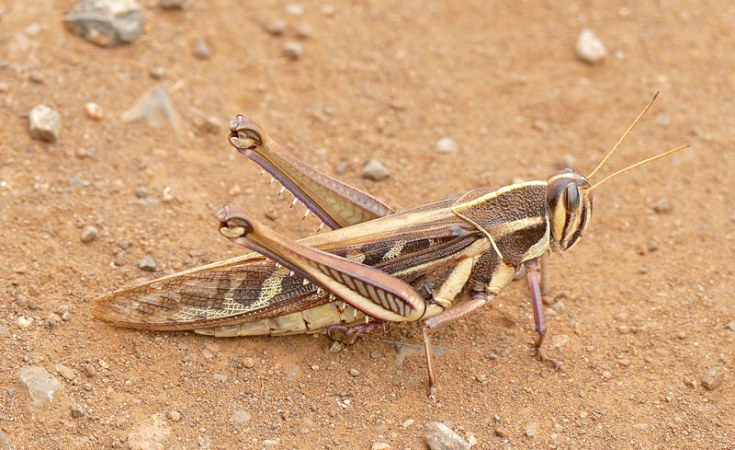Bernard DUPONT/Wikimedia Commons
The government of Namibia needs an estimated US $2m to contain the locust outbreak in the Zambezi region.
The outbreak of the African migratory red locust was reported on 12 August 2020 at Muzi, Namiyundu, lvilivizi, Lusese, Ihaha, Nakabolelwa, Masikili, Malindi, Ibbu, Ngala, Muyako, Mahundu, Machita, Kikiya, Kanono, Muketela, Linyanti, Chinchimani and Kapani areas.
Agriculture, Water and Land Reform minister Calle Schlettwein, speaking to the National Assembly said that since Thursday, more reports are being received on a daily basis. This is the second outbreak in the Zambezi region this year following the first outbreak in February 2020. An area of about 4000 square kilometres has been invaded and 500 hectares of grazing has so far been destroyed by the locust.
The minister added that the required funds are for manpower, vehicle fleet, equipment, personnel protective equipment (PPEs) and other resources to effectively combat the outbreak. Furthermore, and following reports of the outbreak, a spraying team of 35 staff members trained at different Agricultural Development Centres across the country had been deployed.
The ministry also dispatched 4 175 litres of pesticides to contain the pest outbreak. There are several challenges being faced by the team on the ground which includes: lack of camping equipment, vehicles, and the vastness of the area. Based on these challenges, we are convinced that aerial spraying should be introduced to combat the outbreak in a more effective and faster way, reinforce teams to constitute six staff members on a rotational basis.
Meanwhile, FAO reports that in East Africa, only a few immature swarms remain in northwest Kenya where aerial control operations continue. A small third generation of breeding is likely to commence in October but may be limited by below-normal Short Rains that are predicted for this year. In northeast Ethiopia, numerous hopper bands are present mainly in the Afar region from substantial breeding. Although aerial control operations are in progress, new swarms are likely to form in the coming weeks. In Somalia, aerial control operations using bio-pesticides are making good progress against immature swarms on the northern plateau in Somaliland and Puntland.









